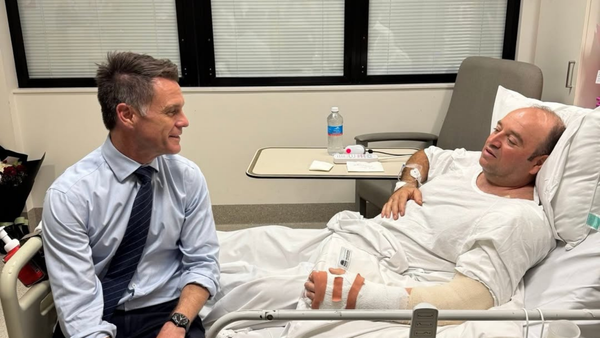Dressing for success matters significantly less nowadays. Traditional office attire, which used to include suits and pencil skirts, has shifted to a more relaxed one, with jeans, sweaters, and sneakers being workers’ most common clothing choices.
So, imagine this employee’s surprise when his supervisor told him to ‘dress better’ in a workplace where others wore jeans and hoodies on a daily basis. Since he was already quite annoyed by the boss and his constant berating, he decided to maliciously comply, which resulted in an outcome he absolutely didn’t expect.
Scroll down to find the full story and conversation with Henna Pryor, workplace performance expert and author of Good Awkward, who kindly agreed to talk with us more about work attire.
Work attire is shifting to a more comfortable and relaxed one

Image credits: Freepik (not the actual photo)
So, this employee was taken aback when he got told by his boss to ‘dress better’ in an office where the dress code for others was quite laid back





Image credits: Freepik (not the actual photo)





Image credits: Dinielle De Veyra/Pexels (not the actual photo)






Image credits: zzdelmarco
Only 3% of employees report wearing business professional clothes at work
The shift to more relaxed work/office attire can be attributed to the pandemic and remote/hybrid work policies. Those who had a taste of working from the comfort of their own home in pajamas and tracksuits realized that coming into work in stiff and tailored clothing doesn’t feel particularly cozy or comfortable. So, naturally, they moved on to something more casual.
In fact, the vast majority of US workers opt to wear more comfortable clothing on the job most days, with 41% sporting business casual, while 31% dress down even more by sporting casual street clothes. Only 3% reported that wearing business professional clothes is their normal attire at work.
Henna Pryor, workplace performance expert and author of Good Awkward, adds that the modern world is all about efficiency, flexibility, and authenticity, so rigid dress codes nowadays feel a bit outdated and old-fashioned. “Companies are realizing that performance doesn’t hinge on pantyhose or neckties—it hinges on comfort, confidence, and connection. These are the new priorities for organizations and high-impact teams,” she explains.
Casual work attire not only offers physical comfort, which fosters productivity, but also saves employees money on elaborate clothing and its dry cleaning costs. In addition, a more relaxed dress code signals a modern, progressive, and flexible company culture, where people would like to work and stay long-term. It’s a great way to attract job seekers and retain them.
“In creative or less traditional industries, a relaxed dress code can reflect the company’s ethos and approach, potentially fostering a more innovative and open environment,” said Denisa Alexandrescu, marketing executive at Health 2 Employment.
“This sense of individuality and freedom of expression… can be a factor in attracting and retaining talent. It also reduces the financial burden and time spent on maintaining a separate wardrobe of professional clothes, which is a relief given the cost of living.”
37% think employees dress too casually at work
However, even though most workers and managers agree that dressing casually for work is appropriate, the topic still sometimes brings up some heated discussions, like in this story. A survey by People Management has found that around 37% of respondents think employees dress too casually at work. Most probably, they’re referring to those who come to work wearing joggers or leggings.
With a more liberal dress code, it might be tricky for employees to estimate what’s appropriate to wear on the job and what’s not. “A relaxed dress code lowers the invisible barrier between ‘work you’ and ‘real you,’ boosting psychological safety and creativity. But if it slips into sloppy – think dirty sneakers or unkempt looks – it can unintentionally signal carelessness or disengagement. We have to be clear about how we define “casual” in our organization so everyone is on the same page,” says Pryor.
“Generally speaking, business casual is all about looking relaxed yet intentional: clean jeans, tailored joggers, crisp tees or polos, and polished sneakers are in, but stained shirts, ripped jeans, baggy sweats, and scuffed gym shoes are still a no-go. It’s about looking neat and put together,” she further advises.
ICS Learn, an online career development course provider, also has some guidelines that could be beneficial to workers in a business casual workplace. “Try to avoid clothes that can come across as sloppy and messy like ripped jeans, hoodies, tracksuits and definitely don’t wear your pyjamas,” their writer Natassa Demetriou advises.
“You should also steer clear of clothing that can be deemed inappropriate and revealing – that goes both for male and female employees. Work is not the place to show off your physical assets and the gains you’ve made in the gym. So, low-cut tops, short skirts and dresses, crop tops, muscle tees and see-through mesh tops should be avoided at all costs.”
If employees or managers have difficulties evaluating what’s appropriate for the work environment and what’s not, it’s a sign that an organization should put a policy in place that clarifies the dress code for the specific company. This way, everyone can stay on the same page and follow the same guidelines, which helps to avoid any issues, misunderstandings, and disputes.
Readers thought this act of malicious compliance was very satisfying






















